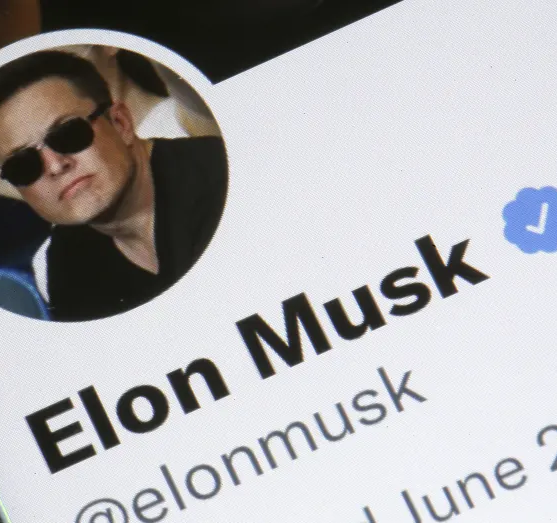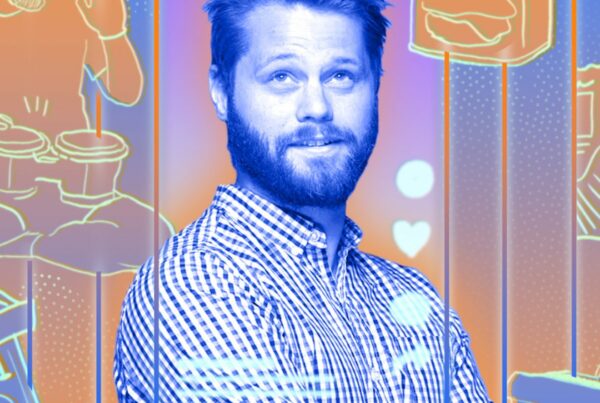What will Elon Musk’s 44-billion dollar purchase of Twitter mean for the way companies use the platform?
Which brand boldly proclaimed this week that Twitter would only be worth a paltry 43 billion without them? And without much dissent it has to be said!
And how can you plug Twitter into your own company’s marketing mix to generate value for your business?
This is Xtra-Ordinary Marketing; a series which explores how innovative brands are shaking up their industries with the most clever, creative and compelling comms around and in this episode I’m exploring Twitter’s role within the marketing mix.
Now, there’s been a bit of news kicking around this week about Twitter – you may have noticed – and, in amongst all the commentary over free speech, the commercial potential of the company and whether Elon Musk is able to fix McDonalds’ ice cream machines, what I haven’t heard talked about a lot is what the Tesla founder has planned by way of developing the platform. And, crucially, what any of it means for brands who use the platform for their marketing.
Musk did post a tweet last night that declared an intention to make Twitter, [quote] “maximum fun” but I don’t think that was the full extent of the business plan he went to Morgan Stanley with.
So, in this episode I’ll be analysing where the platform might go under Musk. And, more broadly, I’ll look at whether – and how – Twitter still fits into the marketing mix for challenger brands, taking lessons from some of the most innovative companies on there.
And, yes, one of them is Tesla.
THE WORLD’S RICHEST ADMIN
Here’s the interesting thing about Musk’s publicised plans for Twitter thus far. That they are almost singularly UNinteresting as far as brands go.
He’s mentioned wanting to have an ‘Edit’ function. He’s mentioned wanting to get rid of bots. He’s mentioned wanting to open-source the algorithms. Well, OK – they’re meaty subjects. But more for individuals than for brands.
In fact, about the only announcement so far that concerns business owners and marketeers is the suggestion that Musk might remove ads from the platform. And we’ll explore this further in a second.
But, that aside, I tend to agree with the New York Times columnist Ezra Klein when he says that the reason Musk hasn’t announced many corporate changes to Twitter is because, “he wants it to be what it is”.
Musk, himself, has told us he sees the platform as a “digital town square” and what is clear is that he wants to retain the egalitarian nature of the platform. He doesn’t want brands to gain an elevated status by dint of their name or budget. He wants everyone to have an equal voice.
And he’s borne out over the years in his unofficial role as the most well-paid customer service rep in the world (on behalf of Tesla, of course).
When a California-based Twitter user tweeted Musk directly to complain about Tesla drivers leaving their cars plugged in even once fully charged (first world problems, I know) Musk replied, agreeing that it was a problem and within six days Tesla had updated the software in every single vehicle in the world, applying an idle charge after a certain period.
You see, Musk loves that what Twitter does better than any other social media platform out there is allow anybody to connect with anyone else, irrelevant of status.
But Tesla aren’t the only company who have mastered Twitter.
Innocent Smoothies gets brilliant engagement on the platform because it tweets about stuff their audience find interesting like The Great British Bake Off and Craig David – not just smoothies. They have, as the philosopher C. Thi Nguyen has written, gamified conversation.
Elsewhere, the supermarket brand, Aldi’s UK account was all over my LinkedIn profile this week for reaching out to Nando’s, KFC, Specsavers and Co-Op (and later, others), publicly asking their Admins to cover their Out of Office for the Bank Holiday weekend. Needless to say, these other brands – carefully selected for their similarly excellent approach to Twitter – couldn’t resist replying… if not exactly agreeing to it!
The activation has been so successful that Aldi subsequently tweeted that, without them, Twitter would only be worth 43 billion. And I suspect Elon wouldn’t disagree too much.
MORE SOCIAL THAN MEDIA
So, how can we take the lessons from Tesla, Innocent and Aldi’s Twitter use and apply them to our own marketing?
First things first; we need to acknowledge that the sales funnel is a broken model. I’ve gone into this in much greater detail in other videos but, for now, just trust me when I say that a far better approach to understanding your marketing efforts is to see them as a mix of the Transactional and the Tribal i.e. some channels should be aimed at selling, while a whole other – equally as important, yet often criminally neglected – side of the mix needs to be focussed on building a brand and encouraging loyalty from current customers.
What Elon Musk – and the other brands mentioned above – realised early on was that Twitter is not, and should not be, a Transactional channel. This is why one of the most financially savvy human beings on the earth is thinking about removing the company’s primary source of income – ads – and why he also told the TED conference recently that he doesn’t see the platform as “a way to make money”.
That means that Twitter must sit on the Tribal side of the axis, which is to say that its place in your marketing mix is either as a means of building community or delivering customer service.
Let’s take them one at a time –
How do you ace Customer Service on Twitter? You ensure anyone managing the account is empowered and empathetic.
Musk’s presence on the channel and willingness to engage with Tesla drivers is the ultimate example of both of these things. I mean, not many Customer Service reps have the power to change every single item a company sells within six days.
Similarly, Musk demonstrates his empathy by proactively asking questions of customers and proactively seeking feedback, rather than waiting for it. Before he bought the company, he asked his followers whether they wanted an ‘Edit’ button – something that Twitter has been dragging its heels on forever. Resoundingly (73% of 4.4 million votes), the answer came back, ‘yes’.
The lesson for innovative, forward-thinking business owners and marketers is that if your company is on Twitter, you should make sure that whoever is manning the feed is given the licence and means to make things right for a customer, without having to get sign-off from on high.
If you want to use Twitter as a Community platform, your job is to be human and communal.
Innocent Smoothies is successful because their Twitter account speaks as a human and connects with customers on a human level – in short, they show that they ‘get’ their customers and custodians. Their live coverage of every series of Bake Off is a way of connecting with a target audience on a channel they know is being used avidly by them during transmission. Meanwhile, tweeting that Craig David is statistically more likely to buy you a drink on a Tuesday is the kind of in-joke that only a certain demographic will get. Not uncoincidentally, that just happens to be their target demographic.
On the point about being Communal, Aldi’s ‘Admin OoO’ activation is a great example of using the conversational nature of the platform.
So many companies talk about “social media” but then treat it as “media” – i.e. a broadcast mechanism – while ignoring the interactive, “social” side. I often say that the clue is in looking at the number of letters in each word; “social media” as a phrase is quite literally more ‘social’ than ‘media’ and should be treated as such.
Twitter, of all the established social media platforms, is the most socially-focussed and so, if you’re setting up your own brand Twitter account, my advice is to find other companies or individuals on the platform who are of a similar size and phase in their brand evolution. Make a list of those who tweet about similar things and have customers who share similar interests and then interact with them regularly. Set up notifications for when they tweet, reply to them and ask questions off your own bat.
Follow all of these tips diligently and in a committed way and, who knows, maybe your brand could be the one to add another billion to Twitter’s value.
For more information on how put Twitter into a coherent marketing mix, please visit my episode on how to choose your marketing channels.





